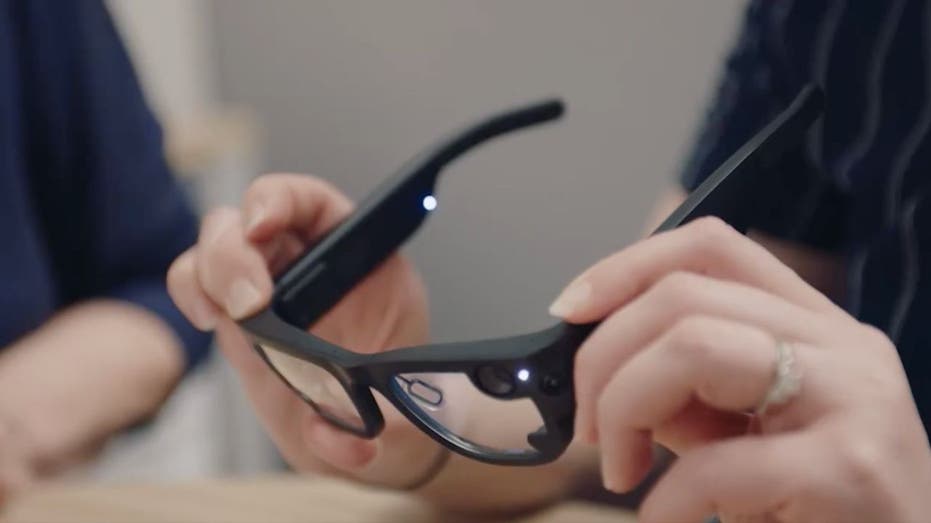Meta Launches Revolutionary AR Glasses with Heart Rate Monitoring

The Next Frontier in Augmented Reality
Prepare to immerse yourself in groundbreaking technology that promises to reshape our interaction with the world. Meta has just revealed its latest innovation: the Aria Gen 2 augmented reality (AR) glasses. However, before you rush to purchase them, it’s essential to know that they are still in the research phase.
Not Your Average Smart Glasses
The Aria Gen 2 glasses are far from the ordinary smart glasses you may be familiar with. They are designed to test the limits of augmented reality and artificial intelligence. While currently a research tool, their advanced features hint at a future where such technology could become commonplace.
Advanced Sensor Suite for Enhanced Experience
One of the most remarkable aspects of the Aria Gen 2 is its sophisticated sensor suite. This includes:
- RGB camera
- 6DOF SLAM cameras
- Eye-tracking cameras
- Spatial microphones
- Heart rate monitoring PPG sensor embedded in the nosepad
- Contact microphone for voice distinction
These features not only enhance the glasses’ functionality but also open new avenues for research and development in augmented reality applications.
Improved Processing Capabilities
Meta has made significant advancements in on-device processing as well. The company’s custom silicon allows for local processing of various functions, including SLAM, eye tracking, hand tracking, and speech recognition. This reduces latency and significantly enhances user experience. Despite the array of features packed into the glasses, they remain lightweight at just 75 grams and offer six to eight hours of continuous use. Additionally, their foldable arms provide convenience for extended research sessions.
Redefining Audio Interaction
Audio interaction has also received a major upgrade. The glasses come equipped with high-quality open-ear, force-canceling speakers, enabling clear audio feedback. This innovation allows researchers to explore user-in-the-loop system prototyping and develop more intuitive AR interfaces.
Transforming Multiple Domains
The Aria Gen 2 glasses are set to advance research in various fields. In machine perception, they enable researchers to investigate how AI systems can better interpret the world from a human viewpoint, which could lead to more context-aware AI systems.
Accessibility initiatives have already benefited from previous versions of the Aria glasses. Projects like NavCog at Carnegie Mellon University have utilized these tools to create navigation aids for visually impaired individuals. With the enhanced capabilities of Aria Gen 2, companies are exploring the integration of AI assistants and spatial audio to improve indoor navigation for users.
Applications in Robotics
The potential applications of the Aria Gen 2 extend into robotics as well. Researchers at Georgia Tech have demonstrated how the Aria Research Kit can assist humanoid robots in learning to support people within home environments. This intersection of AR technology and robotics promises significant advancements in human-robot interaction and assistance.
A Glimpse into the Future of AR Glasses
While the Aria Gen 2 is currently intended for research purposes, it offers a fascinating insight into the future of consumer AR glasses. The inclusion of a heart rate monitor suggests that health-focused features could be integrated into future eyewear, allowing for seamless health monitoring throughout the day. Furthermore, the spatial audio capabilities might be applied to guide users to specific locations or assist in locating lost items.
Interactive User Experience on the Horizon
The hand and eye-tracking technologies featured in the Aria Gen 2 point toward more intuitive interfaces for future AR devices. These advancements could enable users to interact naturally with digital content in their line of sight, eliminating the need for additional controllers or input devices.
AR Technology’s Bright Future
The Aria Gen 2 glasses provide a tantalizing glimpse into the potential of AR and AI integration in everyday eyewear. The innovations presented here are likely to shape the development of consumer-grade AR glasses, leading to even more capable, comfortable, and user-friendly devices in the years to come.
What Do You Think?
As we look toward the future of AR technology, it’s intriguing to consider how we might integrate advanced sensors like those in the Aria Gen 2 into our daily lives. Would you feel comfortable wearing such technology? Share your thoughts with us!
Stay Updated with the Latest Tech Trends
For more insights and updates on technology and security, subscribe to our newsletter. Stay informed about the latest advancements that could change your life.